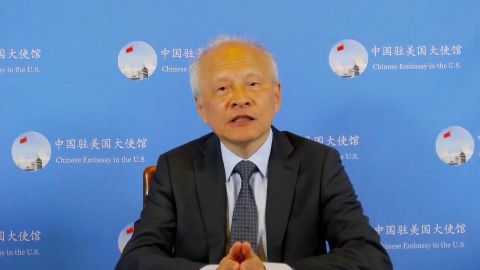Read Transcript EXPAND
CHRISTIANE AMANPOUR: Yes. It’s a fascinating story, and to see, because, of course, the whole world viewed them as victims. And, of course, they were, kidnapped, held hostage against their will. But the strength of these girls, and, as you say, the solidarity that they built together in captivity is really what stands out in your book. There’s a great story about her, Naomi, and the secret bread line she sort of instituted. Tell me about that. And then what did it mean for the emotional and physical survival of these girls and how they managed to resist their captors?
JOE PARKINSON, AUTHOR, “BRING BACK OUR GIRLS”: Well, you hit on something crucial there, because I think a lot of the coverage of this story really portrayed the girls uniformly as victims. And they were victims, of course, of Boko Haram, and they were victims of a very, very appalling few years in the Sambisa forest. But what we started to learn as we began speaking to them and kind of reconstructing their story is how much agency they actually had and how important them taking their life and some of their decisions into their own hands was to shape their experience in captivity. Naomi was at one point part of a group of girls who had been separated because they were earmarked to be released. And these girls were given extra rations. Boko Haram wanted the world to think that they had been well-treated. And so they were essentially being given more food, so they looked more healthy when they were released. They discovered that another group of girls were in a very different situation. They were, in fact, being starved. The commander that was holding them wanted them to marry fighters and was trying to break their will. Now, when Naomi and her friends discovered this, they took the extraordinary risk of funneling their surplus food through the forest to the area where their friends were, crawling through the long grass when the guards were at prayer or in the evening times, when there was less scrutiny, to take them food and to fortify their sisters. When they actually reached their friends, because they didn’t want to shout out because they were worried that the guards would be alerted, they mimicked the sound of a bird in the Sambisa forest. This is one of the ways that they would communicate to each other without alerting the guards. They mimicked the sound of a bird. And their friend came to see them. And they began to pass the food. And as you suggest in the question, this wasn’t just about fortifying their physical state, making them stronger. This was about emotionally connecting and making sure that they knew they were in this together. And that was another huge motif of these stories, is sisterhood and friendship, and the way that they coped together.
About This Episode EXPAND
Chinese ambassador to the U.S. Cui Tiankai gives an exclusive interview on U.S.-China relations and Beijing’s treatment of the Uyghur population. “Bring Back Our Girls” author Joe Parkinson discusses Boko Haram’s 2014 kidnapping of nearly 300 Nigerian girls. I- MAK co-founder and executive director Priti Krishtel discusses vaccine nationalism and the problem with the United States’ patent system.
LEARN MORE


